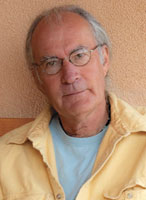Lighting Tools Of The Trade

It’s hard to beat the beautiful quality of “natural” light. As I write this I am looking out my studio window at dusk, right when the rays of the setting sun backlight the magnolia leaves swaying in the wind, and there are thousands of facets of illumination that move together as one. Yet, photographers face the fact that light is not always so kind and gentle, and that subjects do not sway in the wind to add grace to the moment, and that there are some times when you have to make the shot when the light is just plain lousy, or the weather, setup, and subject make it an indoors occasion in small rooms lacking any kind of pleasing, or even ambient light worth shooting in.
That’s when the lighting tools of the trade come into play. Be they the newest continuous lights like LEDs, monoblocs that work off a battery, elaborate strobes with sail-like diffusers, or even just on-camera flash with a secondary lit via a radio transmitter, there are enough options to fit every budget and every lighting scenario need. Making sense from all the options, and making the right choice for the type of photography you do, can certainly be daunting. That’s why we have been concentrating on lighting gear tests and how-to stories all this year (and will continue through next year as well), and why we are happy to bring almost all the stories in this issue under one umbrella, if you will, and that’s lighting.
There are as many lighting solutions as there are challenges. One modern way adapted by shooters is wireless TTL, which frees the shooting environment of, well, wires, and more importantly allows for a more mobile and accessible shooting method. Working with receiver and transmitter, photographers can roam about the studio, or the locale at an event or wedding, and get all the benefits of two (or more) lights and off-camera, directional lighting. To me there’s not a more unpleasant light than the point source pushed out by a single, camera-mounted strobe; it’s guaranteed to cause unwanted shadows, harsh facial illumination and falloff as the overwhelming blast of light gives proper exposure of the foreground subject while dooming the context to deep, often impenetrable shadows. Our roundup of wireless TTL solutions should go a long way to helping you solve that dilemma.
There’s also a new kind of “continuous” light—LEDs, which avoid the heat generated by past systems while bringing all the advantages of a constant light source to the fore. While output is certainly lower than the controlled explosion of a strobe, they solve other problems for setups where high flash power might not always be required.
In short, photographers today have a whole new set of solutions for bringing light into the darkness, and with craft and skill, in recreating all the beauty of natural light, and adding special effects in the bargain. And speaking of technique, we also feature work from top pros who share their lighting secrets, with in-depth looks on setups, gear, and, perhaps most important, making lighting “statements” with your work. That’s what this issue, and our continuing series on lighting tools and techniques, is all about. 
Shutterbug On The Web
While we strive to bring you all the latest information in these pages, we have supplemented our offerings with articles and reviews created exclusively for our website, www.shutterbug.com. For example, our latest additions to the Image Tech section (click on Image Tech in our top navigation bar) include camera test reports on:
• Sigma SD1
• Sony NEX-C3
• Sony SLT-A35
• Panasonic GF3
• Leica M9-P
- Log in or register to post comments

































